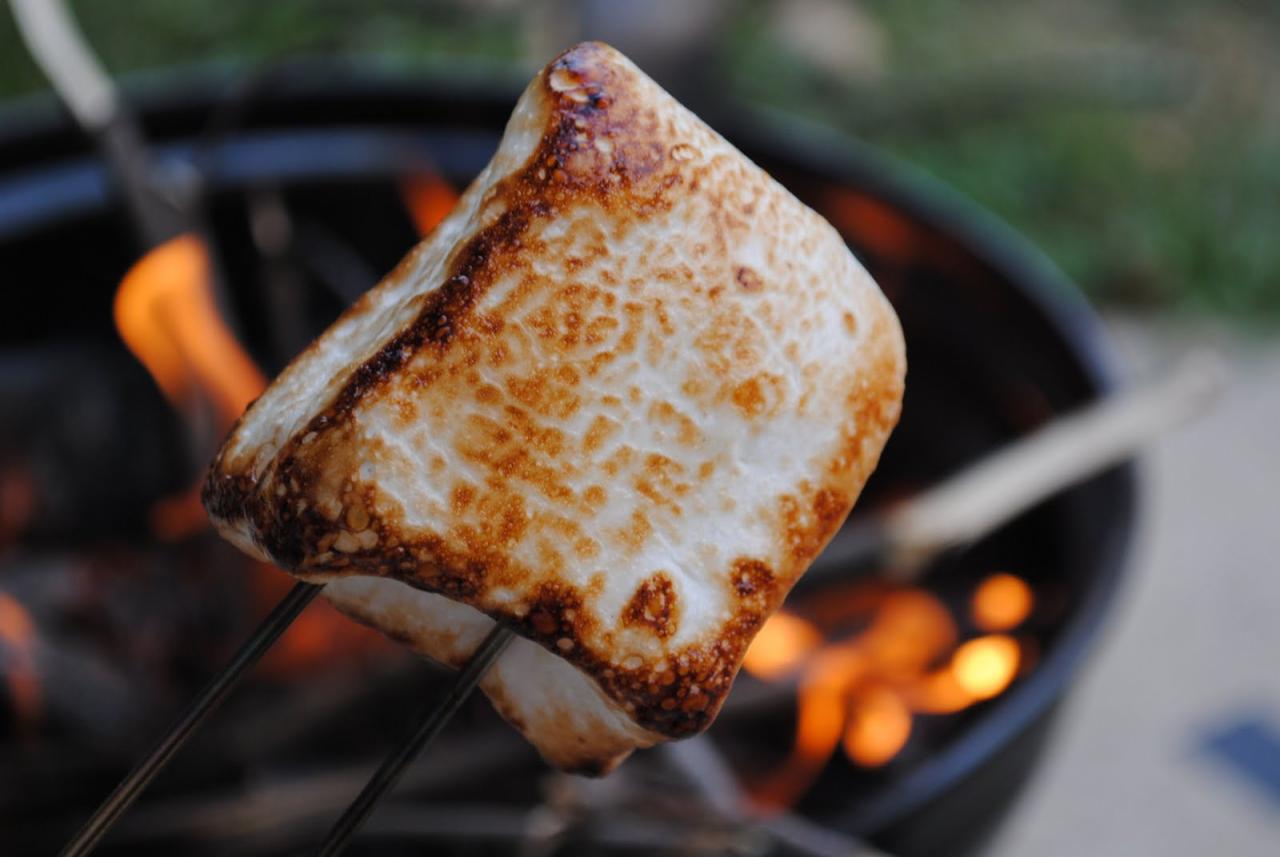Like the texture of a roasted marshmallow nyt – In the realm of culinary delights, the texture of a roasted marshmallow stands out as a symphony of sensations, captivating the palate with its unique combination of crispiness and softness. From its caramelized exterior to its fluffy interior, this beloved treat offers a sensory experience that is both satisfying and unforgettable.
This article delves into the intricacies of the roasted marshmallow’s texture, exploring its flavor profile and the delightful sensations it evokes. Through a detailed analysis and engaging storytelling, we unravel the secrets behind this culinary masterpiece, leaving you with a newfound appreciation for its simple yet extraordinary qualities.
Texture Analysis

A roasted marshmallow presents a unique textural experience that combines a crispy caramelized exterior with a soft and fluffy interior. This combination creates a delightful contrast in both texture and flavor.
The exterior of a roasted marshmallow develops a golden brown color and a slightly crunchy texture as the sugars caramelize under the heat. This caramelized layer provides a sweet and slightly smoky flavor that complements the soft and fluffy interior.
Comparison to Other Foods, Like the texture of a roasted marshmallow nyt
The texture of a roasted marshmallow is similar to that of other confections such as cotton candy and meringues. However, there are subtle differences that distinguish each one.
- Cotton candy: Cotton candy is made from spun sugar and has a light and airy texture that dissolves easily in the mouth. Unlike roasted marshmallows, cotton candy does not have a caramelized exterior and is generally less dense.
- Meringues: Meringues are made from whipped egg whites and sugar and have a crisp and airy texture. They are typically baked at a low temperature to create a delicate and fragile structure. Roasted marshmallows have a softer and more pliable texture compared to meringues.
Flavor Profile

The roasted marshmallow possesses a distinctive flavor profile that tantalizes taste buds with its harmonious blend of sweetness, smokiness, and a subtle hint of bitterness. This captivating flavor symphony is orchestrated by the caramelization process that takes place during roasting.
As the marshmallow is exposed to heat, its sugars undergo a complex transformation, resulting in the formation of caramel. This process not only contributes to the marshmallow’s alluring golden-brown hue but also imparts a rich, toasty flavor that complements the inherent sweetness.
Caramelization Process
The caramelization process involves the breakdown of sugars into simpler compounds, including glucose and fructose. These compounds then rearrange themselves into complex, flavorful molecules that contribute to the marshmallow’s characteristic taste. The extent of caramelization depends on the roasting time and temperature, allowing for customization of the flavor intensity.
A marshmallow roasted over a gentle flame for a short duration will exhibit a delicate sweetness with a hint of smokiness. In contrast, a marshmallow roasted over a higher flame for an extended period will develop a more pronounced caramelized flavor, with a slightly bitter undertone that balances the sweetness.
Sensory Experience

Biting into a roasted marshmallow is an experience that engages all the senses. The warm, fluffy exterior gives way to a soft, chewy interior that melts in the mouth, releasing a burst of sweetness. The texture is a delightful combination of crispiness and tenderness, creating a unique and satisfying sensation.
Warmth
The warmth of a roasted marshmallow is one of its most appealing qualities. It provides a comforting and cozy feeling, especially on a cold day or evening. The heat from the marshmallow radiates through the body, creating a sense of well-being and relaxation.
Softness
The interior of a roasted marshmallow is incredibly soft and fluffy. It yields easily to the teeth, creating a velvety sensation in the mouth. The softness of the marshmallow allows it to melt quickly, releasing its sweet flavor and creating a rich, creamy texture.
Sweetness
The sweetness of a roasted marshmallow is another key factor in its appeal. The sugar content in the marshmallow caramelizes during the roasting process, creating a rich and intense flavor. The sweetness of the marshmallow pairs perfectly with the warmth and softness of its texture, creating a truly indulgent experience.
End of Discussion
The texture of a roasted marshmallow is a testament to the transformative power of heat, transforming a simple ingredient into a culinary marvel. Its unique combination of crispiness and softness, sweetness and smokiness, creates a sensory experience that lingers long after the last bite.
Whether enjoyed on its own or as part of a s’more, the roasted marshmallow remains an iconic treat that brings joy to people of all ages.
Essential Questionnaire: Like The Texture Of A Roasted Marshmallow Nyt
What is the difference between the texture of a roasted marshmallow and a cotton candy?
While both marshmallows and cotton candy are made with sugar, the roasting process gives marshmallows a distinct caramelized exterior that cotton candy lacks. Additionally, marshmallows are denser and chewier than cotton candy, which is light and airy.
What causes the roasted marshmallow to have a soft and fluffy interior?
The high sugar content in marshmallows prevents them from fully caramelizing during the roasting process, resulting in a soft and fluffy interior. The trapped air bubbles also contribute to the marshmallow’s light and airy texture.
How does the caramelization process enhance the flavor of the roasted marshmallow?
The caramelization process creates a complex flavor profile in roasted marshmallows. The sugars in the marshmallow caramelize, creating a sweet and slightly smoky flavor. This caramelization also adds a subtle bitterness that balances out the sweetness.

